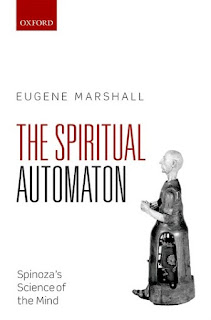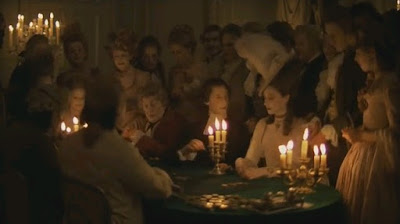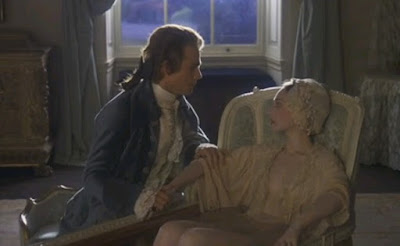 |
| The flesh and the mind - Robert de Niro's iconic portrayal of Travis Bickle in 'Taxi Driver' (1976). |
Taxi Driver - 40th Anniversary
40 years later, 'Taxi Driver' is still talking to you.
Have you ever been in a state of loneliness? No, I am not
challenging the fact that you have 2500 friends on Facebook or have 850 likes
for an Instagram photo. The question is – have you ever experienced any
existential dread, and the desperation of desiring others’ company,
companionship and respect? Do you have the faith that, a fictional disturbed
man’s story can shed light and give insights on these potential existential
crises we may well experience in our lives? If your answer is ‘yes’, you are
invited to this final article in 2016. This time, I will talk about one of the
most iconic American film in the 1970s, which is celebrating its 40th
anniversary this year – Martin Scorsese’s ‘Taxi Driver’ (1976)!
Scorsese’s masterpiece has such an impact that its influences
can be seen in many subsequent films and other facets of our culture. A film
that has inspired imitations, parodies, and spoofs, ‘Taxi Driver’ contained
memorable and poetic cinematic images, that have made the urban experience and
alienation as thrilling as any expressionistic attempts to portray it. It was
critically very well received at the year of its release, and achieved 4
Academy Award nominations (including Best Picture and Best Actor in a Leading
Role for Robert de Niro), and was recognized by the National Film Registry,
AFI, BFI and various institutes and magazines. Aside from the large number of
movies that has paid homage or spoofed the ‘Are you talking to me’ mantra,
‘Taxi Driver’ has inspired ‘Fight Club’, ‘Reservoir Dogs’, ‘Pulp Fiction’ (and
other Tarantino movies), ‘Nightcrawler’ and ‘Mr. Robot’, to name a few iconic
examples. Travis Bickle’s dark tale of malevolence still lingers in the psyche
of cinematic art.
Robert de Niro has portrayed Travis Bickle, likely the
character he will always be remembered for, and his first-rate performance and
memorable quotes (like the classic ‘... u talkin’ to me?’) have struck resonance
with audience from different generations ever since. Though Travis was supposed
to be a psychopathic character, audience seemed to identify with him a lot,
leading to the popularity of the film. The reason is because, while many of us
may not be as psychopathic as a character like Travis, we do share a lot of
problems he has experienced in the film – loneliness, emptiness of life,
desperation for love and companionship, and self-actualization in a harsh
world. Travis Bickle is the mirror Martin Scorsese and Paul Schrader have
offered to the audience – to expose our dark sides, and the aspects we do not
have the courage to confront. In the ultimate ‘... u talking to me’ scene, the
scene is framed in a way that Travis, while apparently looking into a mirror,
appears like he is facing the audience. Yes, Travis is talking to YOU – while
the intention for him is to train on his cowboy stance, it reflects more of a
desperation for him to connect with others, and indeed, the world he situates
in. His loneliness penetrates the inner loneliness of the audience. By
confronting the image of Travis Bickle, we have an opportunity to confront the
darkest corners of our minds.
The approach is let this work is through a forced
perspective, which is an approach Kubrick has also employed in ‘A Clockwork
Orange’. For both films, the filmmakers deliberately let the audience to view the
world through an unsympathetic (or negative) character, and their sometimes
twisted and distorted viewpoints will not only raise the awe of the audience
(‘I have never thought about this...’), and may even inspire new and original
viewpoints from the audience. The subjective and active participation is
absolutely beneficial because now the members in the audience are not just
passively receiving ‘facts’ that the filmmakers want you to hear, but they are
challenging the assumptions that are often believed or postulated to be
correct. Only through these activities, novel cinematic ideas can emerge and
enrich the contribution of film to humanity.
‘Taxi Driver’ stands a special place in my cinematic oeuvre.
Not only it has always been one of my favorite films of all time, it is
certainly the film I have watched the most times in my life, perhaps more than
that of ‘The Terminator’ series. I believe I have watched the film no less than
100 times, since I first watched the film around the age of 15. To put it simply,
I have developed an obsession to this film. What I am so impressed about ‘Taxi
Driver’ is that, every scene, every frame, the rhythm and the images, have a
meaning for the film. Scorsese has so deliberately staged and put in
mise-en-scene in a detailed and clever way that it makes Travis’ odyssey in
this nightmarish world so authentic and memorable. As a viewer, when you are
engaged with Travis’ journey in the cab, you are fascinated by what you can see
around the dirty world, and yet sense the danger and the ticking of the bomb –
the eruption of violence that can take place any time.
Throughout ‘Taxi Driver’, we can see Travis Bickle’s mental deterioration,
and his futile attempts to connect with those he wants to love or be friends
with. His epic loneliness has led him to form distorted ideas regarding the
ones around him, and he seems to only see the dark and negative sides from
everyone around him (which, unfortunately, is not too far from the truth in a
realistic world). When he discovered the clean spirit in Jodie Foster’s role as
a young prostitute, he saw himself as a savior to the young girl, from the pimp
(played by Harvey Keitel) who only exploited her for profit. This is obviously
a clear inspiration from John Ford’s ‘The Searchers’, and to a lesser extent,
George Stevens’ ‘Shane’ – thus ‘Taxi Driver’ has been coined as ‘The Searchers
of 1970s’. Like John Wayne’s Ethan Edwards in ‘The Searchers’, Travis is a man
of enigma. We have absolutely no idea whether Travis is really a Vietnam War
Veteran – thus is qualified as a PTSD scenario, or that is just his delusional imaginations,
to step into a role that can at least make his existence a bit more meaningful.
It is like Ethan Edwards, who has hidden secrets and dishonesty he is not
willing to expose (‘Where have you been all these years after the War?’). Both
men are motivated by a false sense of heroism, but in their conflicted minds,
they are consumed by the demons inherent in the male psyche. Travis Bickle is
the descendant of Ethan Edwards – the cinematic male who is driven by paranoia,
obsessions, and desires. To this, Anthony Mann’s influence is also evident in
‘Taxi Driver’, as in a number of Scorsese films.
Some commentators have suggested that the taxi cab
represents Travis’ inner psyche. That is an insightful observation, yet I can
also see ambivalence. The cab is certainly Travis’ comfort zone, that is a
place where he can exert minimal interactions with other people, not like on
the streets or in a cafeteria, for example. Yet, it is also a place beyond his
obsessive control, because crises and problems can enter in the most unexpected
manner. Indeed, the narrative is taken on the way by what has been happening in
the cab – the introduction of Iris (Jodie Foster), the meeting with the politician
he will attempt to assassinate, and the crazy passenger (played by Mr.
Scorsese) who gives an monologue about the power of Magnum .44. The taxi cab is
where Travis nurtures his conflicted feelings and dark inspirations of
malevolence, which, when he steps out of his cab to the daylight, he will put
into action. When Scorsese’s cameo character was discussing the possibility of
blowing his unfaithful wife out with a Magnum .44, the next day when Travis met
a travelling salesman, the first question he asked was, ‘u got a Magnum .44?’
The cab also provides a vehicle for voyeurism (a
Hitchcockian motif), a visual pleasure of spying and observing others. It is
what Travis does when he stalks on women like Betsy (Cybill Shepherd) and Iris,
and when Betsy rejects him, he laments that women are all bad and much like a
‘union’. The idea of voyeurism comes hand in hand with the psychosexual aspects
of humanity. A darkly comic, yet quite sad at the same time, moment is when
Travis has his first date with Betsy, he is so inept at social customs that he
takes her to watch a pornographic movie, leading to Betsy’s rejection. I have
read a tongue-in-cheek comment on the internet regarding this scene, stating
that, if Travis has taken Betsy to watch ‘All The President’s Men’ (another
1976 film) instead of the porn movie, he would have a better chance. What is so
clever about this comment is that it hits the spot on the battle of our
conscious and unconscious drives in our minds. In our conscious mind, we view
men as brave, courageous, resourceful and honest, just like the heroes in ‘All
The President’s Men’, whistle-blowing the Watergate Scandal. But, as Freud has insightfully
observed, our irrational unconscious mind is down to illogical, malevolent
ideas driven by ideas and blind impulses. That is the area where the
pornographic movie will be welcomed instead. It sounds horrible, yet it is an
honest observation. Travis does not gate-keep his unconscious desires, and just
let his unconscious drives roaming around the apparently civilized, yet dirty
streets of modernity.
Travis Bickle lives a circumstantial existence in ‘Taxi
Driver’. When the rain that he hopes will be able to clean up the streets does
not arrive, he commits to be the martyr instead. After a rather pathetic
attempt to assassinate a political candidate, he diverts his focus and attempts
to save Iris from the pimps instead. The violent massacre that ensues leads to
the gruesome death of the pimps and the customers at the brothel. On the brink
of death, Travis attempts suicide. While running out of bullets, he points a
finger-gun on himself, very much like a hara-kiri of the Samurai, as pointed
out by Schrader. Miraculously, Travis survives and becomes a national hero.
While it is ambiguous whether it is only a dying imagination or not, Scorsese
tends to favor that Travis has lived, because that makes the meaning of the
story deeper. If Travis is successful in the assassination, he will become
another Lee Harvey Oswald, a violent psychopath despised by the generations to
come, rather than a crime buster he is lauded as. The only thing that is
common is the violence. Like ‘A Clockwork Orange’, violence cannot be
eliminated – it is only the form of the violence exerted, and the circumstances
in which the violence is exerted, have changed. Yet that will lead to 2
completely opposite perceptions, swinging from a despicable villain to a
courageous hero. At the end of the day, Travis has not been cured. Even if he
has his ‘John Wayne moment’, and has garnered understanding from Betsy, his
anger and violence still has not left him. The famous last shot from the rear
view mirror suggests vigilance and curiously, anxiety. Travis is alarmed, and
this ticking bomb in a human form will soon explode again...
If, after watching ‘Taxi Driver’, you share a similar belief
with Travis that you want to take the world and flush it down a toilet, don’t
despair. Because if we are not aware of the problems in our own world, how can
that lead us to a better future?
See you in 2017!
by Ed Law
31/12/2016
Film Analysis - 71















